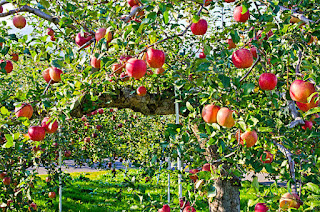The End Lies in Zurich
Much of these past posts have
reflected on the representation of food in literature alongside discussing the
effect of Joyce’s provocative narratives. From the short stories of the Dubliners
to the childhood delights of Christmas in A Portrait of the Artist as a Young
Man, he astonishingly manages to immerse us in worlds which see food as both an
essential and experimental part of life. However to end our journey, this post
will focus less on Joyce’s elongated narratives, driving towards how he creates
similar complexities in his work through alternative literary styles. Of
course, this indicates a much needed reflection on Joyce’s poetry. First
published in 1948, The Essential James Joyce contains a selection of the writer’s
most prolific works, discussing all matter of subjections; anything from
mythology to Charles Stewart Parnell and most importantly, food. It is from the
smallest phrases that Joyce manages to present a such a vast selection of
interpretations. One of the most significant examples of this lies in two lines
of the seventh stanza of Chamber Music. It writes “My love is in a light
attire, Among the apple trees” (444).

How amazing is this. Food is usually depicted as something at the focus of a character; whether it relates to their disgust or delight it generally refers to the consumption of food. Despite this, Joyce uses the apples in their natural habitat, whilst highlighting them as inanimate objects. It seems like superficially the apples play no part in this passage. But the closer we read, the more we discover. The apples serve as an aesthetic choice for the writer’s romantic encounter in the nature of the trees. And for me this says it all. Even without being the central focus of the poem. Not even displaying the desires of a person to consume it. This does not matter one bit. For the impact of food in literature stretches far past consumption. It lives as part of the scenery for everyday life.

How amazing is this. Food is usually depicted as something at the focus of a character; whether it relates to their disgust or delight it generally refers to the consumption of food. Despite this, Joyce uses the apples in their natural habitat, whilst highlighting them as inanimate objects. It seems like superficially the apples play no part in this passage. But the closer we read, the more we discover. The apples serve as an aesthetic choice for the writer’s romantic encounter in the nature of the trees. And for me this says it all. Even without being the central focus of the poem. Not even displaying the desires of a person to consume it. This does not matter one bit. For the impact of food in literature stretches far past consumption. It lives as part of the scenery for everyday life.
How amazing is this. Food is usually depicted as something at the focus of a character; whether it relates to their disgust or delight it generally refers to the consumption of food. Despite this, Joyce uses the apples in their natural habitat, whilst highlighting them as inanimate objects. It seems like superficially the apples play no part in this passage. But the closer we read, the more we discover. The apples serve as an aesthetic choice for the writer’s romantic encounter in the nature of the trees. And for me this says it all. Even without being the central focus of the poem. Not even displaying the desires of a person to consume it. This does not matter one bit. For the impact of food in literature stretches far past consumption. It lives as part of the scenery for everyday life.


Comments
Post a Comment